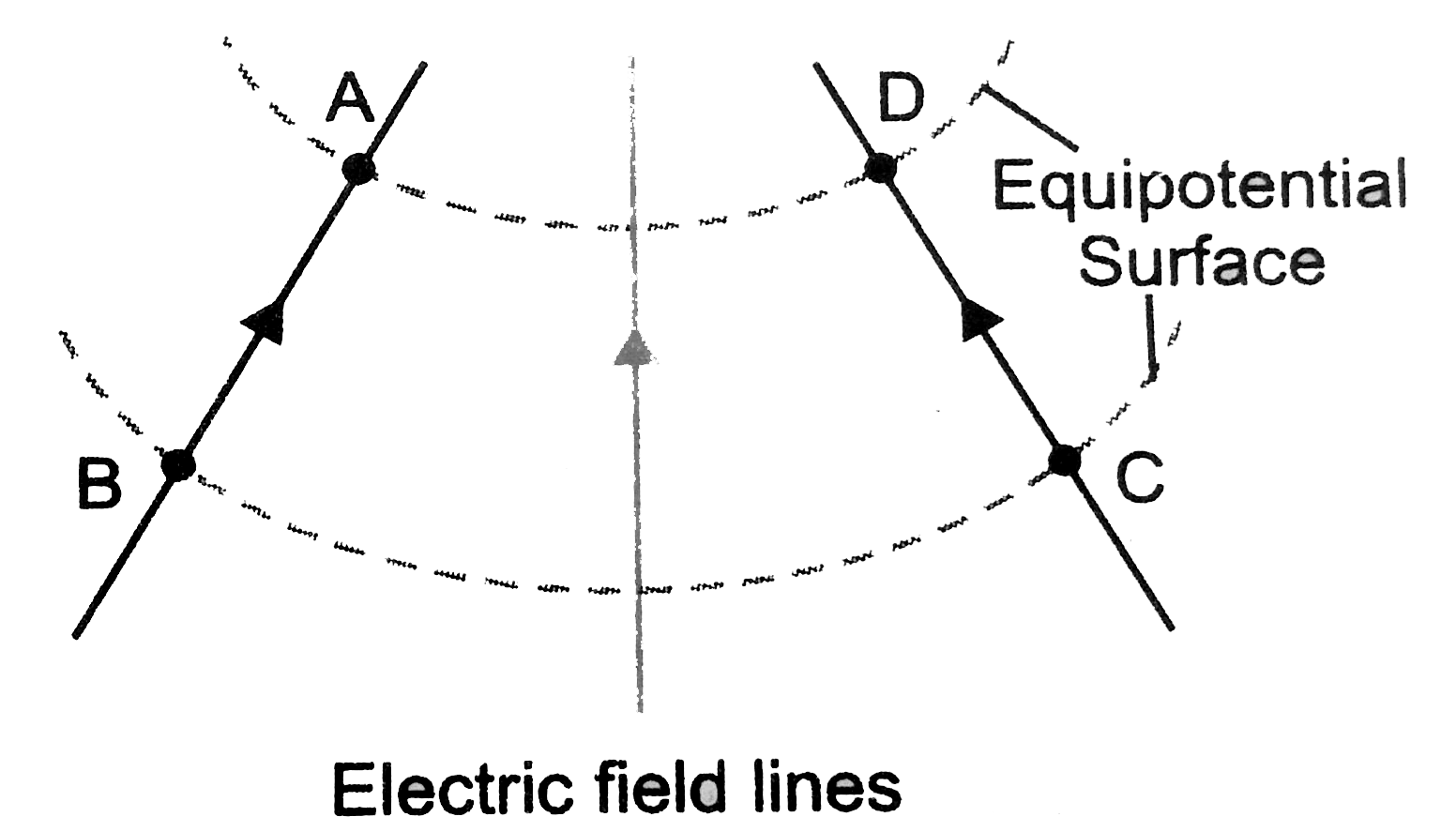When an electron moves from A to B along an electric field line in Fig. 24-66, the electric field does 4.78×10−19J of work on it. What are the electric potential differences (a) VB−VA (b) VC−VAand ( c) VC−VB?

(a) 2.99V, (b) 2.99V, (c )0
Topper's Solved these Questions
- ELECTRIC POTENTIALBOOK - RESNICK AND HALLIDAYCHAPTER - ELECTRIC POTENTIALEXERCISE - (PRACTICE QUESTIONS) Single Correct Choice Type
21 Videos
- ELECTRIC POTENTIALBOOK - RESNICK AND HALLIDAYCHAPTER - ELECTRIC POTENTIALEXERCISE - (PRACTICE QUESTIONS) More than One Correct Choice Type
8 Videos
- ELECTRIC POTENTIALBOOK - RESNICK AND HALLIDAYCHAPTER - ELECTRIC POTENTIALEXERCISE - CHECKPOINT
6 Videos
- ELECTRIC CHARGES AND FIELDSBOOK - RESNICK AND HALLIDAYCHAPTER - ELECTRIC CHARGES AND FIELDSEXERCISE - Practice Questions (Integer Type )
3 Videos
- ELECTROMAGNETIC INDUCTIONBOOK - RESNICK AND HALLIDAYCHAPTER - ELECTROMAGNETIC INDUCTIONEXERCISE - PRACTICE QUESTIONS (Integer Type)
14 Videos
Similar Questions
When an electron moves from A to B along and electric field line as shown in Fig. the electric field does 3.94×10−19J of work on it. What are the electric potential differences
(VB−VA),(VC−VA),(VC−VB) ?

View SolutionIn moving from A to B along an electric field line, the work done by the electric field on an electron is 6.4×10−19J. If ϕ1andϕ2 are equipotential surfaces, then the potential difference VC−VA is.
 .
.
View Solution
Knowledge Check
In moving from A to B along an electric field line, the work done by the electric field on an electron is 6.4×10−19J. If ϕ1andϕ2 are equipotential surfaces, then the potential difference VC−VA is.
 .A−4VB4VCzeroD6.4V
.A−4VB4VCzeroD6.4VIn figure two points A and B are located in a region of electric field . The potential difference VB−VA is
 APositiveBNegativeCZeroDNone of these
APositiveBNegativeCZeroDNone of these15 joule of work has to be done against an existing electric field to take a charge of 0.01 C from A to B. Then the potential difference (VB−VA) is :-
A1500 voltB−1500 voltC0.15 voltDnone of these
In figure two points A and B are located in a region of electric field . The potential difference VB−VA is

View SolutionIn Fig 27-50,ε=24.0V,R1=2000Ω,R2=3000ΩandR3=4000Ω. What are the potential differences (a) VA−VB (b) VB−VC (c) VC−VDand(d)VA−VC?

View SolutionA uniform electric field of 30NC−1 exists along the X-axis calculate the potential difference VB−VA between the points A (4m,2m) and B(10m,5m).
View Solution20 J of work has to be done against an existing electric field to take a charge of 0.05 C from A to B. How much is the potential difference VB−VA ?
View Solution12 j of work has to be done against an existion electric field to take a charge of 0.01 C from A to B. How much is th potential difference VB−VA?
View Solution
